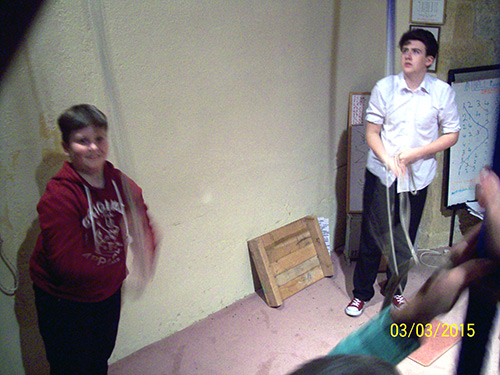Kaleidoscopic Ringing
by Lynne Hughes
Kaleidoscopic ringing means practise in continuous dodging, long or short place making, or any combination of these. It is excellent for developing ropesight and awareness of which place you are in, and is good for those moving on from call changes or starting to ring methods.
You can have several pairs of bells continuously dodging or continuously making places or long (4 blows) places. I normally keep the Treble and tenor fixed and have bells in 2-3, 3-4, and 5-6 all doing something till I say, “That’s all”.
The Mexican Wave
From the CCCBR Website
A Mexican Wave is a simple form of Kaleidoscope ringing – sequential place making.
Why use it?
• It provides the first steps in learning to cover.
• It allows a learner to go into and out of the lead for just two blows at a time.
• It is a stepping stone between call changes and plain hunting. • It helps to develop accurate striking.
• Two or three learners can ring at the same time. • It can be rung for service.
• It provides an opportunity for very early calling as all the conductor has to say is “Go Mexican Wave” at a handstroke.
• It is fun and makes a little more variety than just call changes.
Teaching a Mexican Wave

Kaleidoscopic Ringing is Fun!
Place your learners on non-neighbouring bells, e.g. 2, 4, 6, or 1, 3, 5 if the treble ringer can lead.
Stand in the centre of the circle facing the ringers.
Explain that they will be changing places with a neighbouring bell for one whole pull, starting at handstroke and then it is back into rounds.
Explain that the bell following the bells changing places will have to ring over a different bell for two blows, i.e. cover over a changing pair.
Say, “Treble and two go next handstroke . . . and back into rounds”.
Continue with the rounds while you appraise performance. If the learner was too quick or slow/wide or close at any of the blows explain, advise and repeat until the striking is accurate.
Then move round, the next command is “Two and three go next handstroke . . . back into rounds”. Next do the same with 3 and 4, 4 and 5, (and 5 and 6 if you wish).
Lots more ideas for learners can be found at www.cccbr.org.uk , left hand column, “ Ringing Practice Toolkit”.
